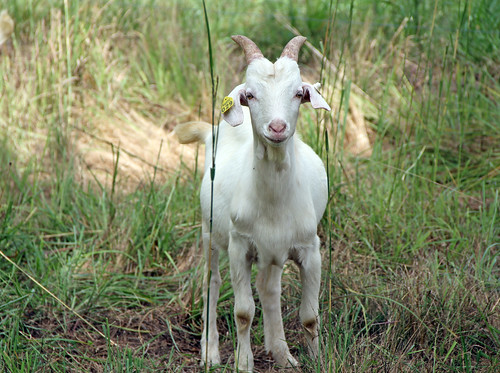For the fecal samples collected on July 20, fecal egg counts (FECs) ranged from 0 to 7,750 eggs per gram and averaged 870 epg, compared to 623 epg for the samples collected on July 7.
Over the years, research (and experience) has shown that fecal egg counts, as well as worm burdens are not equally dispersed in a herd. They do not fit a bell-shaped curve.
Usually only a small percentage of the animals in a herd have high fecal egg counts, even when clinical parasitism is high. In other words, a small number of animals is usually responsible for shedding most of the eggs onto pasture.
The 80/20 rule is widely accepted. It states that approximately 20 percent of the hosts harbor 80 percent of the parasites.
On July 20, twenty-two goats in the test had fecal egg counts above 1,000 epg. These 22 goats represented 29.7 percent of the herd (fecal samples were analyzed from 74 goats on July 20). Yet, they accounted for 78 percent of the total eggs shed onto the pasture.
Nine goats had fecal egg counts above 2,000 epg. These 9 individuals represented 12.2 percent of the herd. They accounted for 50 percent of the total eggs shed onto the pasture.
While it's great that some of the heavy egg shedders didn't require deworming, as evidenced by the August 4th report, these same animals were responsible for significantly contaminating the pastures.
In a farm situation, internal parasitism can be reduced if the heavy egg shedders are removed from the herd. Parasite resistance (fecal egg counts) and resilience (FAMACHA© scores) are equally important traits. Neither should be ignored in selection decisions, especially in pasture-rearing environments.
To qualify for the sale on September 24, bucks must Gold, Silver, or Bronze standards of performance for parasite resistance AND resilience, as well as growth.
Zero grazing
For the goats in the pen, fecal egg counts (on July 20) ranged from 0 to 876 epg and averaged 143 epg, compared to 623 epg on July 7.
Six of the ten goats had zero egg counts. No goat had an egg count above 1,000 epg. This is to be expected as there is minimal opportunity for parasite infection or re-infection in a zero-grazing situation.
From a practical standpoint, zero-grazing or dry lot feeding can be a way to minimize parasite infection and/or re-infection, especially for extremely susceptible animals.
August 4 report with FEC data
Over the years, research (and experience) has shown that fecal egg counts, as well as worm burdens are not equally dispersed in a herd. They do not fit a bell-shaped curve.
Usually only a small percentage of the animals in a herd have high fecal egg counts, even when clinical parasitism is high. In other words, a small number of animals is usually responsible for shedding most of the eggs onto pasture.
The 80/20 rule is widely accepted. It states that approximately 20 percent of the hosts harbor 80 percent of the parasites.
On July 20, twenty-two goats in the test had fecal egg counts above 1,000 epg. These 22 goats represented 29.7 percent of the herd (fecal samples were analyzed from 74 goats on July 20). Yet, they accounted for 78 percent of the total eggs shed onto the pasture.
Nine goats had fecal egg counts above 2,000 epg. These 9 individuals represented 12.2 percent of the herd. They accounted for 50 percent of the total eggs shed onto the pasture.
| Individual goats are represented on the horizontal axis |
While it's great that some of the heavy egg shedders didn't require deworming, as evidenced by the August 4th report, these same animals were responsible for significantly contaminating the pastures.
In a farm situation, internal parasitism can be reduced if the heavy egg shedders are removed from the herd. Parasite resistance (fecal egg counts) and resilience (FAMACHA© scores) are equally important traits. Neither should be ignored in selection decisions, especially in pasture-rearing environments.
To qualify for the sale on September 24, bucks must Gold, Silver, or Bronze standards of performance for parasite resistance AND resilience, as well as growth.
 |
| #29 is a low egg shedder Kiko buck consigned by Jeanne Dietz-Band (MD) |
Zero grazing
For the goats in the pen, fecal egg counts (on July 20) ranged from 0 to 876 epg and averaged 143 epg, compared to 623 epg on July 7.
Six of the ten goats had zero egg counts. No goat had an egg count above 1,000 epg. This is to be expected as there is minimal opportunity for parasite infection or re-infection in a zero-grazing situation.
From a practical standpoint, zero-grazing or dry lot feeding can be a way to minimize parasite infection and/or re-infection, especially for extremely susceptible animals.
August 4 report with FEC data











